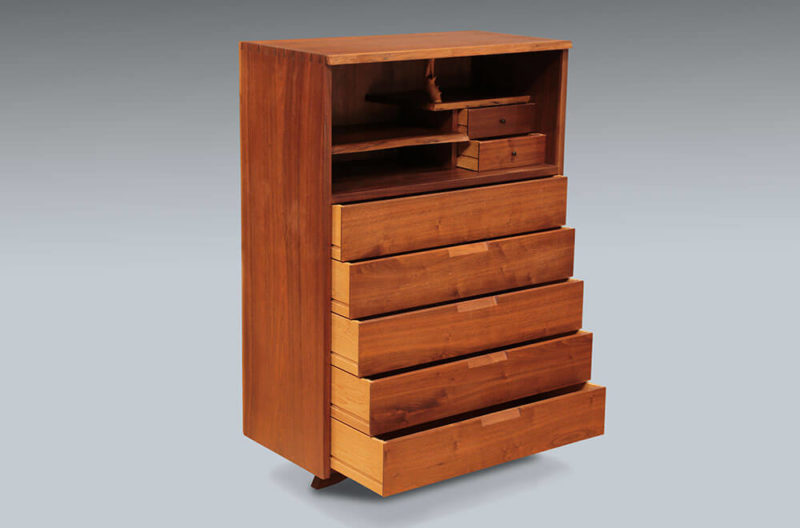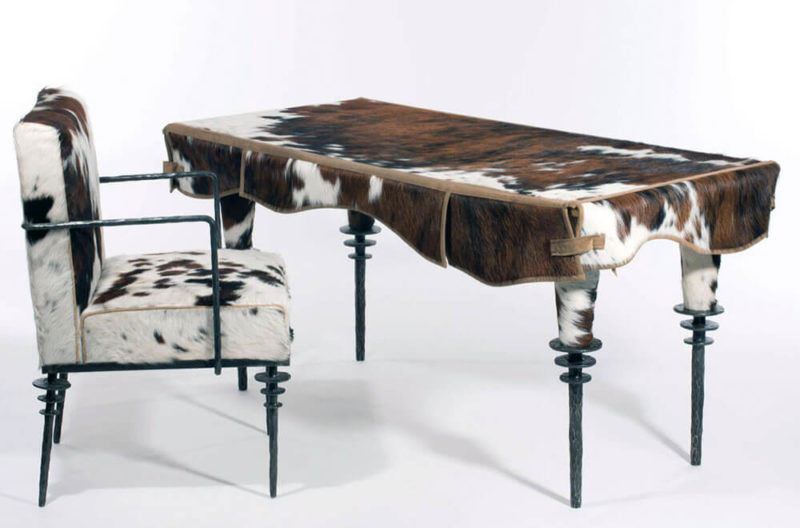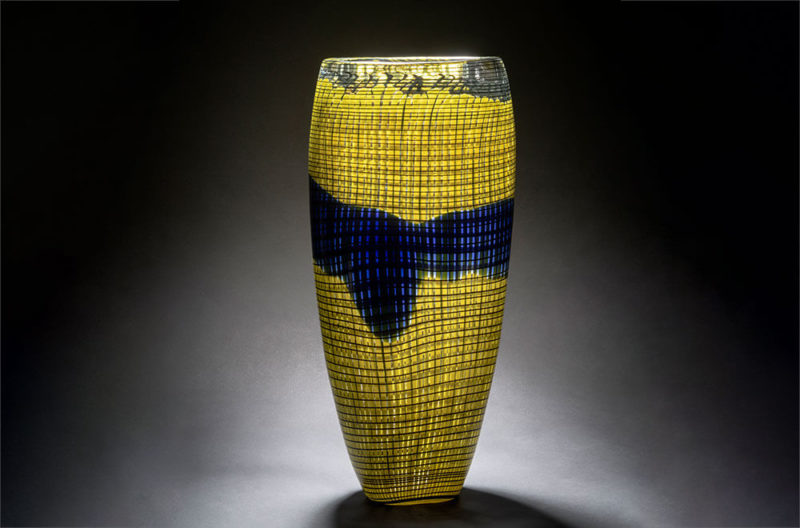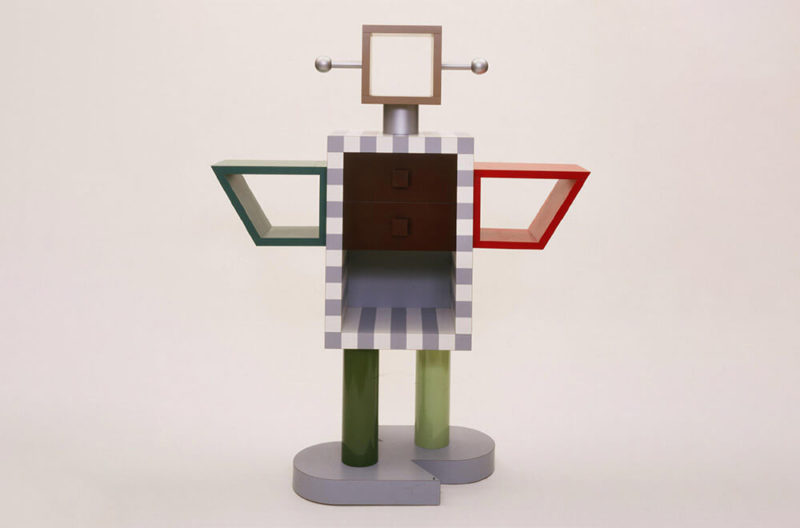‘Parzival Sofa’, 1987
Robert Wilson

Robert Wilson, ‘Parzival Sofa’, 1987
COURTESY: RW Work
SUPPORTED BY A large maple wood frame – complete with weighty legs, a sloped back and a discreetly-rounded edge – the somewhat minimalist ‘Parzival Sofa’ is defined by its metal mesh overlay. The suggestively soft, yet entirely rigid, upholstering perfectly contours the articulation of the base, offering geometric dimension. Designed by renowned theatre director Robert Wilson, the monumental, expressive, emphatically postmodern and assuredly avant-garde chaise longue was originally crafted as a prop for a September 1987 opera of the same name, presented at Hamburg’s Thalia Theater.
A product of New York’s 1960s counterculture movement, Wilson gained recognition in the mid-1970s for his format-defying productions. He brought a new deconstructivist and non-linear approach to dramaturgical classics, while also developing his own original, often collaborative, creations. Notable projects like ‘Einstein on the Beach’ – a five-hour opera developed with noted composer Philip Glass – catapulted the director onto the European stage and eventually made him a fixture of the international scene.
Wilson has been prolific in producing a diverse, ever-evolving oeuvre for almost half a century. A non-traditionalist who values an almost otherworldly method of self-expression, he’s collaborated with everyone from Trisha Brown and Jessye Norman, to David Byrne and Lady Gaga
Wilson is a true adopter of the concept first put forward by Richard Wagner, and later amplified by Bertolt Brecht, that opera is a medium in which to enact total works of art. Though integral to his work, the director’s equally abounding crop of sketches and prop furniture designs have sometimes been overlooked. It’s only through a recent rediscovery of these masterworks, including ‘Parzival Sofa’, that this facet of his transdisciplinary output is receiving its due credit.
“In almost all of my plays, there is a chair specially designed,” the director is quoted as saying in ‘Robert Wilson in conversation with Umberto Eco’, an article published in the January 1993 issue of Performing Arts Journal. “Often, the chairs are much like an actor.” These designs favour narrative and improvisation over function or technical innovation, even if some demonstrate a feat in assembly or finishing.
Mounted by independent curator and longtime Wilson collaborator Owen Laub at Brooklyn-based gallery MDFG, the ‘Robert Wilson: Chairs, 1969–2011’ exhibition – on view from 17th November 2022-14th January 2023 – brings together 20 distinct works from different stages of his long career. Pieces like ‘Doktor Procopius Chair (Bone Chair)’ (1996), ‘Bessie Smith Breakfast Chair’ (1988), and ‘Hanging Chair (Freud)’ (1969/1991) serve as surviving, tangible artefacts from the productions for which they were conceived. Some even go so far as to evoke Wilson’s particular approach to movement, posture and skewed sense of time.
These designs were often inspired by Wilson’s own collection. This vast offering is housed in part at The Watermill Center, the director’s long-established “laboratory for performance,” located on the East End of Long Island. Composed of everything from Marlene Dietrich’s diamond-studded pumps, a lounge chair from Freud’s Vienna office, prehistoric totems, to plastic superhero masks picked up at a Jakarta street market, this repository has served as one of the director’s main sources of inspiration.
‘Robert Wilson: Chairs, 1969–2011’ runs at MDFG until 14th January 2023.







